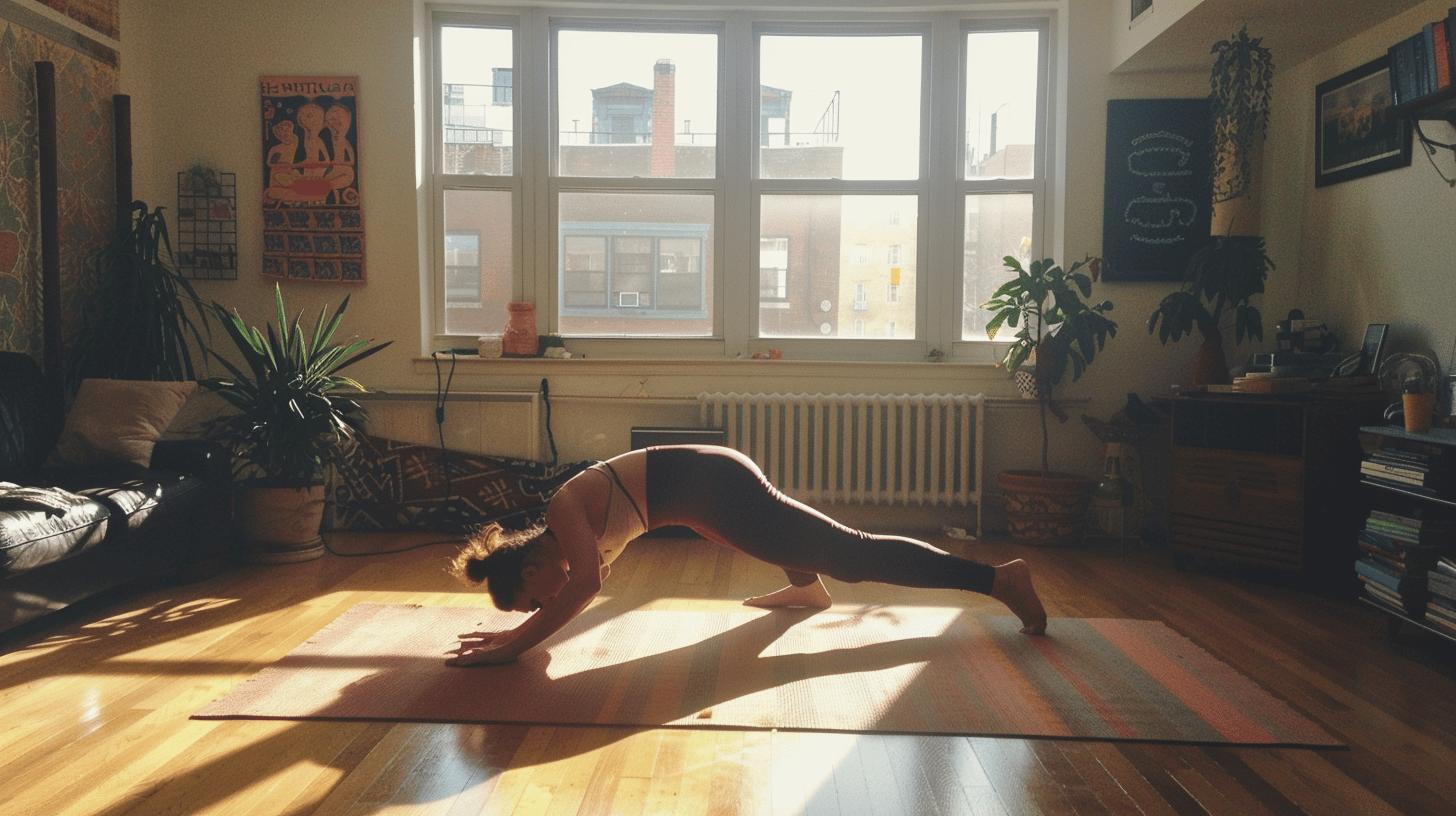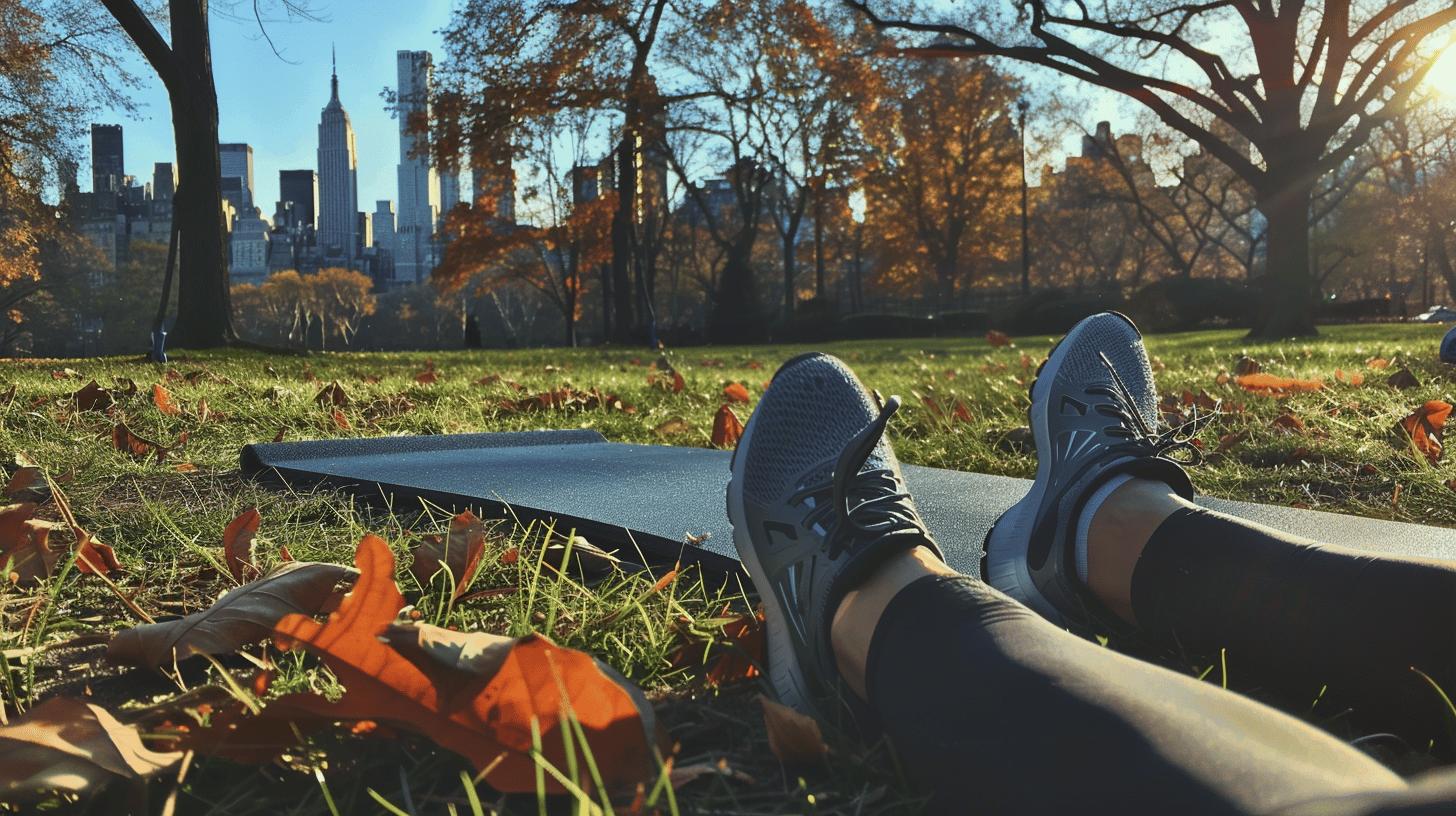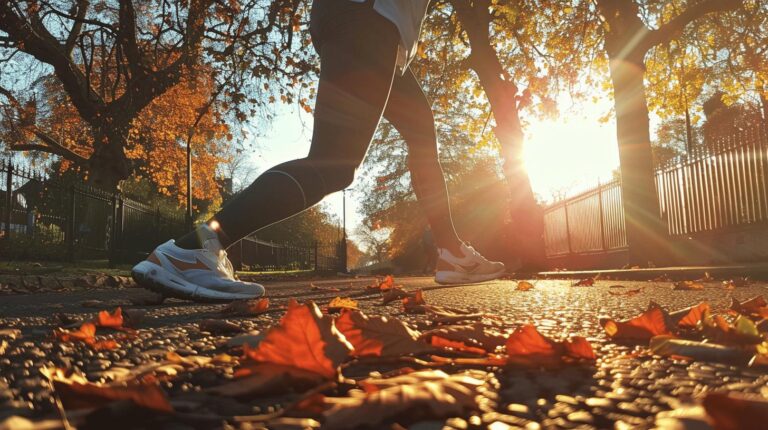Is runner’s knee holding back your performance on the track? Far from an unavoidable side effect of running, this common ailment—characterized by dull pain around the kneecap—can be managed and even prevented. Strengthening your knee is crucial not just for alleviating pain, but for enhancing your overall running efficiency. This article dives into effective strategies to help you reinforce your knees, ensuring you stay active and pain-free. Explore practical exercises, lifestyle tips, and preventive measures designed to tackle runner's knee head-on.
Understanding Runner's Knee and Its Causes
Runner's knee, also known as patellofemoral pain, is a common ailment among runners. It primarily manifests as a dull pain around the kneecap, often accompanied by rubbing, grinding, or clicking sounds. This condition can significantly affect a runner's performance and comfort, making it crucial to understand its symptoms and underlying causes.
Anatomically, runner's knee is often caused by improper patella tracking, where the kneecap does not move smoothly within its groove at the end of the thigh bone. Structural defects, such as misalignment of the bones, can contribute to this improper tracking. Additionally, biomechanical factors like weak hips and weak thigh muscles can exacerbate the issue, as they fail to support the knee adequately during running activities.
Lifestyle-related causes also play a significant role in the development of runner's knee. Poor running style, characterized by excessive pronation or supination, can place undue stress on the knee joint. Being overweight increases the load on the knees, further aggravating the condition. Addressing these factors through proper technique and weight management can help mitigate the risk of developing runner's knee.
Effective Physiotherapy Exercises for Knee Pain
Physiotherapy exercises are instrumental in alleviating knee pain and enhancing knee function. They target specific muscle groups to provide stability and strength, ultimately reducing discomfort. By focusing on the quadriceps and glutes, physiotherapy can help in knee recovery and prevent future injuries. These exercises are designed to improve flexibility, increase muscle strength, and promote better joint alignment, all of which are crucial for maintaining knee health.
Several physiotherapy exercises have proven effective in addressing knee pain. Seated leg raises, for example, are beneficial for providing stability and comfort. Strengthening the quadriceps and glutes is also essential, as these muscles play a significant role in supporting the knee joint. Incorporating these exercises into a regular routine can lead to significant improvements in knee function and pain relief.
-
Seated Leg Raises
- Sit on a chair with your back straight and feet flat on the floor.
- Extend one leg out straight in front of you.
- Hold for a few seconds, then lower it back down.
- Repeat 10-15 times for each leg.
-
Quadriceps Sets
- Sit or lie down with your leg straight.
- Tighten the muscles at the top of your thigh.
- Hold for 5 seconds, then relax.
- Repeat 10-15 times for each leg.
-
Glute Bridges
- Lie on your back with your knees bent and feet flat on the floor.
- Lift your hips towards the ceiling.
- Hold for a few seconds, then lower back down.
- Repeat 10-15 times.
-
Hamstring Curls
- Stand and hold onto a chair for balance.
- Lift one heel towards your buttocks.
- Hold for a few seconds, then lower back down.
- Repeat 10-15 times for each leg.
-
Step-Ups
- Stand in front of a step or bench.
- Step up with one foot, then bring the other foot to join.
- Step back down with the same foot.
- Repeat 10-15 times for each leg.
Essential Knee Strengthening Exercises at Home

Home exercises can be highly effective for strengthening the knee without the need for equipment. They provide the flexibility to engage in a consistent routine, which is crucial for rehabilitation and prevention of runner’s knee. By focusing on targeted exercises, one can enhance knee stability, improve muscle strength, and reduce the risk of future injuries.
Several specific exercises are particularly beneficial for strengthening the knee. Single-leg hip bridges are excellent for targeting the glutes and hamstrings, which support the knee joint. VMO activation exercises focus on the vastus medialis oblique muscle, crucial for patellar tracking. Performing 3 to 4 sets of 8 to 12 reps of each exercise can lead to significant improvements in knee strength and functionality.
Consistency and progression are key to successful knee strengthening. Starting with a manageable number of repetitions and gradually increasing the intensity will help build strength without overloading the knee. Incorporating these exercises into a daily or weekly routine ensures steady progress. It's also essential to listen to your body and adjust the exercises as needed to avoid strain or injury.
| Exercise | Instructions |
|---|---|
| Single-Leg Hip Bridges | Lie on your back with one knee bent and the other leg extended. Lift your hips towards the ceiling, keeping the extended leg in line with your body. Hold for a few seconds, then lower back down. Repeat 8-12 times for each leg. |
| VMO Activation | Sit with your legs extended. Place a small ball or rolled-up towel under one knee. Press the knee into the ball/towel, tightening the muscles above the knee. Hold for 5 seconds, then relax. Repeat 8-12 times for each leg. |
| Wall Sits | Stand with your back against a wall and slide down into a seated position. Keep your knees at a 90-degree angle. Hold this position for 30 seconds to 1 minute. Repeat 3-4 times. |
| Standing Leg Lifts | Stand straight and lift one leg to the side, keeping it straight. Hold for a few seconds, then lower it back down. Repeat 8-12 times for each leg. |
| Calf Raises | Stand with your feet hip-width apart. Lift your heels off the ground, standing on your toes. Hold for a few seconds, then lower back down. Repeat 8-12 times. |
Stretches to Alleviate and Prevent Runner's Knee
Stretching plays a pivotal role in alleviating pain and preventing runner's knee by enhancing flexibility and reducing muscle tension around the knee joint. Improved flexibility allows for better movement patterns, which can reduce the strain on the knee during running activities. Stretching also helps in maintaining the balance between muscle groups, which is crucial for proper knee function. By incorporating regular stretching into their routine, runners can mitigate the risks associated with tight or imbalanced muscles that often contribute to runner's knee.
Several specific stretches are particularly effective in addressing and preventing runner's knee. The basic quad stretch is fundamental for loosening the quadriceps, which can otherwise pull on the knee joint and exacerbate pain. The hip flexor stretch targets the muscles at the front of the hips, which are often tight in runners and can affect knee alignment if not adequately stretched. Holding each stretch for at least 30 seconds on each side ensures that the muscles are sufficiently lengthened and can contribute to better knee health.
-
Basic Quad Stretch
- Stand on one leg and bring the other foot up towards your buttocks.
- Hold your ankle with your hand and gently pull to stretch the quadriceps.
- Hold for at least 30 seconds, then switch sides.
-
Hip Flexor Stretch
- Kneel on one knee with the other foot in front, forming a 90-degree angle at both knees.
- Push your hips forward gently to stretch the hip flexors.
- Hold for at least 30 seconds, then switch sides.
-
Hamstring Stretch
- Sit on the ground with one leg extended and the other bent, with the sole of the foot touching the inner thigh of the extended leg.
- Reach towards the toes of the extended leg to stretch the hamstring.
- Hold for at least 30 seconds, then switch sides.
Advanced Knee Strengthening Exercises for Runners
Advanced knee strengthening exercises are essential for experienced runners to enhance knee stability and reduce the risk of injury. These exercises target key muscle groups that support the knee, improving overall performance and endurance. As runners progress, incorporating more challenging exercises helps to build resilience and adaptability, crucial for tackling varied terrains and longer distances.
Some effective advanced exercises include the step-up with knee drive and the single-leg box step-down. The step-up with knee drive focuses on the quadriceps, glutes, and hip flexors, promoting dynamic stability and strength. The single-leg box step-down targets the quadriceps and the muscles around the knee, helping to improve balance and control. Performing 3 sets of 8 to 12 repetitions for each exercise ensures adequate stimulation for muscle growth and endurance.
Incorporating these advanced exercises into a regular workout routine requires a strategic approach. It's important to start with a proper warm-up to prepare the muscles and joints for the upcoming load. Gradually increase the intensity and complexity of the exercises to avoid overloading the knee. Additionally, combining these exercises with other strength and flexibility routines can provide a well-rounded fitness program, ensuring comprehensive knee health and performance enhancement.
-
Step-Up with Knee Drive
- Stand in front of a step or bench.
- Step up with one foot, driving the opposite knee up towards your chest.
- Lower the driving leg back down and step off the bench.
- Repeat 8-12 times for each leg.
-
Single-Leg Box Step-Down
- Stand on a box or step with one leg, the other leg hanging off the side.
- Slowly lower yourself by bending the standing knee until the hanging leg touches the ground.
- Push back up to the starting position.
- Repeat 8-12 times for each leg.
-
Bulgarian Split Squats
- Stand a few feet in front of a bench, with one foot resting on the bench behind you.
- Lower your body into a lunge, keeping the front knee in line with the toes.
- Push back up to the starting position.
- Repeat 8-12 times for each leg.
- Pistol Squats
- Stand on one leg, extending the other leg out in front of you.
- Lower your body into a squat while keeping the extended leg off the ground.
- Push back up to the starting position.
- Repeat 8-12 times for each leg.
Preventive Measures to Avoid Runner's Knee

Preventing runner's knee starts with a comprehensive warm-up and stretching routine. A robust warm-up of 10-15 minutes helps increase blood flow to the muscles and prepares the body for the demands of running. Mild stretching before running, focusing on the quadriceps, hamstrings, and calves, enhances flexibility and reduces the risk of muscle strain. These practices are essential for maintaining joint health and minimizing the stress on the knees during running activities.
Additional preventive measures include the use of proper footwear and maintaining a healthy weight. Running shoes that provide adequate support and cushioning can significantly reduce the impact on the knees. Regularly replacing worn-out shoes is also crucial to ensure continued support. Weight management plays a vital role as excess weight increases the load on the knees, leading to higher risk of injury. By incorporating these measures, runners can effectively decrease the likelihood of developing runner's knee.
- Warm-Up
Engage in light jogging or dynamic movements like leg swings for 10-15 minutes. - Stretching
Perform stretches targeting the quadriceps, hamstrings, and calves for 30 seconds each. - Proper Footwear
Choose running shoes that provide good support and cushioning; replace them every 300-500 miles. - Weight Management
Maintain a healthy weight to reduce the load on your knees and lower the risk of injury.
Final Words
Understanding runner's knee and its causes is critical for effective management. Recognizing symptoms and addressing anatomical, biomechanical, and lifestyle factors provides a solid foundation.
Effective physiotherapy exercises and essential at-home knee strengthening routines can alleviate pain and improve function. Advanced exercises further enhance strength and stability.
Incorporating preventive measures like proper warm-up, stretching, and suitable footwear is key to long-term knee health.
Strengthening runners knee involves a holistic approach combining knowledge, targeted exercises, and preventive strategies. Here's to pain-free running and stronger knees!
FAQ
How to strengthen runner's knee?
To strengthen runner's knee, incorporate exercises like single-leg squats, step-ups, and side-lying leg lifts. These exercises target key muscles around the knee, improving stability and reducing pain. Consistency is vital for effective results.
How to strengthen knee ligaments?
To strengthen knee ligaments, perform exercises that focus on stability and balance. Examples include balance board exercises, single-leg stands, and resistance band training. These exercises enhance ligament resilience and joint support.
Physiotherapy exercises for knee pain?
Physiotherapy exercises for knee pain include seated leg raises, wall squats, and hamstring curls. These exercises help alleviate pain by strengthening the muscles around the knee, improving joint stability and function.
Knee strengthening exercises at home?
Knee strengthening exercises at home include seated leg raises, single-leg dips, and quadriceps stretches. Perform 3-4 sets of 8-12 reps per exercise to improve knee strength and stability without any equipment.
What are runner's knee exercises to avoid?
Avoid runner's knee exercises that put excessive stress or strain on the patella, such as deep squats, lunges, and high-impact activities. Focus on low-impact exercises to prevent further injury.
Can runner’s knee go away?
Runner’s knee can go away with appropriate treatment, including rest, physiotherapy, and strengthening exercises. Consistently following a suitable rehabilitation program helps alleviate symptoms and promotes recovery.
Can I still exercise with runner’s knee?
You can still exercise with runner’s knee, but choose low-impact activities like swimming or cycling. Avoid exercises that exacerbate the pain and focus on strengthening the muscles supporting the knee.
Does strength training help runner’s knees?
Strength training helps runner’s knees by enhancing muscle support around the joint. Exercises targeting the quadriceps, hamstrings, and glutes improve knee stability and reduce pain.

